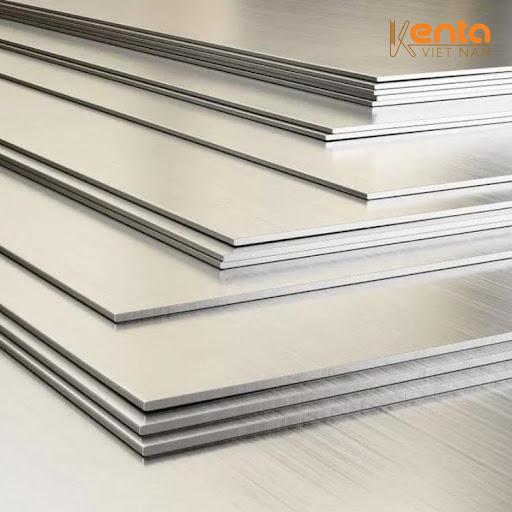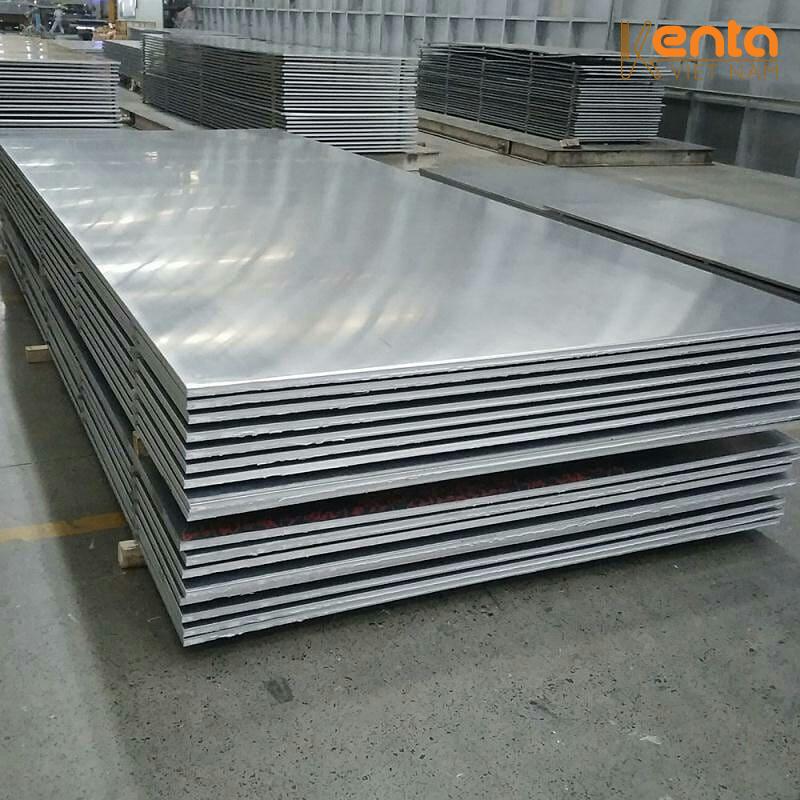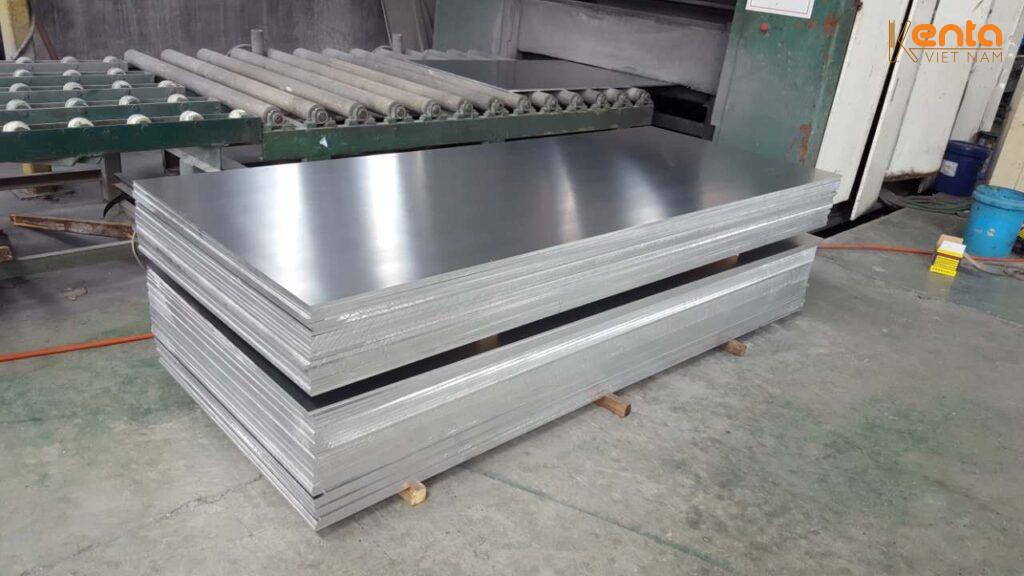Knowledge, Technology
What are the common types of aluminum sheets today?
Aluminum sheet is an essential material in construction and industry. However, choosing the right type of aluminum sheet for a project is not simple. This article will provide a comprehensive and in-depth overview of the common types of aluminum sheets available today,helping you make optimal decisions and ensure technical and economic efficiency for your project.
In-depth look at what are the common types of aluminum sheets today?
To choose the right aluminum sheet, it is crucial to understand the characteristics and applications of each type. Below are the most common types of aluminum sheets on the market today:

1. A1050 Aluminum Sheet with high purity
A1050 Aluminum Sheet is pure aluminum (minimum 99.5% aluminum). It is very ductile, easy to bend, has good corrosion resistance, and excellent electrical and thermal conductivity, although its mechanical strength is not high. Thanks to these properties, A1050 is often used in interior decoration, billboards, heat sinks, electronic casings, food packaging, and gutters.
2. A3003 aluminum sheet, a versatile solution for all projects
A3003 Aluminum Sheet is an aluminum-manganese alloy, with better strength and corrosion resistance than A1050. It is also easy to weld and form, suitable for many processing procedures. This type of aluminum is widely used for household appliances (pots, pans), chemical containers, some automotive parts, and roofing.
3. A5052 aluminum sheet with corrosion resistance
A5052 Aluminum Sheet is an aluminum-magnesium alloy, notable for its excellent corrosion resistance (especially in saltwater), high tensile strength, and ease of welding. As a result, it is an ideal choice in the marine industry (boat hulls, equipment), pressure vessels, truck bodies, and coastal architecture.
4. A5083 aluminum sheet – Super durable and salt-resistant
A5083 Aluminum Sheet is an aluminum-magnesium alloy with a higher magnesium content than A5052, providing superior strength and excellent stress corrosion resistance in harsh marine environments. This type also welds very well. A5083 is used for heavy-duty applications such as large shipbuilding (hulls, marine structures), liquefied natural gas (LNG) tanks, and heavy-duty truck bodies.
5. A5086 aluminum sheet balances strength and weldability
A5086 Aluminum Sheet is an aluminum-magnesium alloy, offering an optimal balance of high strength, good corrosion resistance, and excellent weldability. It is often chosen when higher strength than A5052 is required while still ensuring ease of processing. This type of aluminum is suitable for medium-sized boats, marine welded structures, industrial tanks, and truck components.
6. A6061 aluminum sheet is an alloy with diverse structures
A6061 Aluminum Sheet is an aluminum-magnesium-silicon alloy, known for its harmonious combination of high strength, ease of welding, and relatively good corrosion resistance. It is often heat-treated (T6) to enhance its load-bearing capacity. A6061 is widely used in construction structures (frames, railings), automotive components, aircraft, molds, and fixtures.
7. A7075 aluminum sheet, a superior high-strength alloy
A7075 Aluminum Sheet is an aluminum-zinc alloy, characterized by extremely high strength and hardness (comparable to steel), often T6/T7351. A7075 is used in applications requiring maximum load-bearing capacity such as the aerospace industry (load-bearing components), military, high-end molds, and high-end sports equipment.
What is aluminum sheet and why is it important?
Aluminum sheet is an aluminum alloy rolled thin from pure ingots or alloys. The production process involves refining bauxite ore into pure aluminum, then mixing it with other metals to create an alloy and rolling it into sheets according to standards.

Aluminum sheet is highly valued for its many outstanding advantages:
- Light & Durable: Reduces structural load, easy to transport, good load-bearing capacity.
- Corrosion Resistance: Self-forms a protective oxide layer, good resistance to harsh environments.
- Easy to Process: Easy to cut, weld, bend, drill, flexible in design.
- High Aesthetics: Diverse surface treatments, suitable for many architectures.
- Good Thermal & Electrical Conductivity: Ideal for heat sinks and electrical equipment casings.
- Environmentally Friendly: Nearly 100% recyclable, saving resources.
Tips for Choosing the Right Aluminum Sheet
Choosing the right aluminum sheet helps optimize efficiency and cost. Please note the following points:
- Determine the Purpose of Use: What do you need aluminum sheets for? Load-bearing? Decoration? Indoors, outdoors, or special environments (marine, chemical)?
- Research Technical Specifications: Check the aluminum grade (e.g., A5052), thickness, dimensions, and manufacturing standards to ensure suitability.
- Choose a Reputable Supplier: Prioritize suppliers with clear CO, CQ documents, experience, professional consultation, and good service, to avoid low-quality products.
- Consider Cost & Investment Efficiency: Although the initial price may be higher, durable and low-maintenance aluminum sheets will save on repair and replacement costs in the long run.

Conclusion
Aluminum sheets are a comprehensive solution for many technical and aesthetic requirements. Each type of aluminum has its own advantages and potential. We hope this article has helped you better understand the common types of aluminum sheets available today and how to choose the optimal material.
If you have any questions or want to learn more about aluminum sheets, do not hesitate to contact Kenta VietNam for support!




















